Download Cocos Creator 3.8 using the Cocos Dashboard
Cocos Creator has been iterating for nine years, and its mature and stable visual editor has greatly improved developer productivity.
But this is not only an era of production speed. Production efficiency is not enough. As a mobile-first cross-platform engine, the Cocos Engine has chosen: Everything! Significant R&D resources have been invested to enhance rendering while always paying close attention to post-release runtime performance, power consumption, and stability (such as runtime performance, package size, load speed, memory overhead, power usage, system and platform compatibility, etc.).
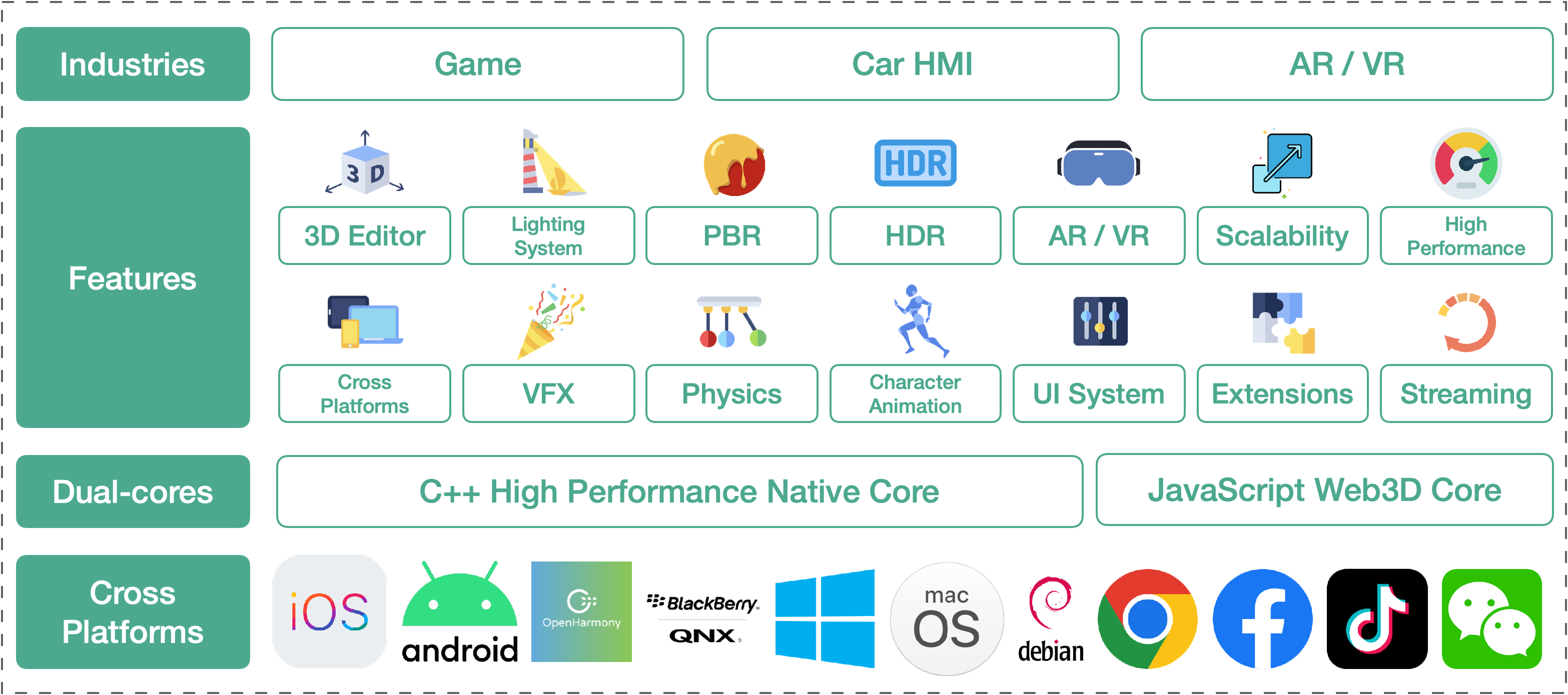
Also, to achieve maximum performance on native and non-native platforms, the Cocos Engine team built a dual-core engine architecture to ensure "native" performance on every platform.
-
C++ High-Performance Core: When released as native applications, the engine runs with core libraries written in C++ to ensure optimal performance. -
Web3D Core: When publishing as a web / mini-game application, the engine uses a Web3D core written in TypeScript to ensure the smallest engine package and the least code redundancy.
After nine major updates for Cocos Creator version 3, 3.8 finally completed this dual-kernal engine architecture, enabling games and applications made by Cocos engine to have good performance, memory footprint, power consumption, high stability, and compatibility on native, web, and mini game platforms.
Based on these core advantages, Cocos engine have built more and more great 3D features so that it can serve in many industries besides gaming, such as automotive, XR, digital marketing, and so on. Democratizing of gaming technologies will bring more room for the growth of the Cocos engine and the developers who choose it.
At the same time, the open source project of the Cocos engine and the extensibility we built around it also allows projects to have full control on optimization, stability and flexibility.
Next, let's have a quick tour the updates in Cocos Creator 3.8.
If you want a full review of the developer notes, they are available in our release notes on our forums.
Custom Render Pipeline with Post-Processing
Cocos Creator 3.8 adds a new post-process pipeline, so developers can quickly achieve their desired post-effects according to the project's needs and improve the project's quality.
Such as anti-aliasing TAA + FXAA, super-resolution FSR, BLOOM, HBAO, LUT, etc.
Rendering Algorithm And Advanced Material Updates
In addition to standard rendering capabilities such as PBR materials, HDR rendering, real-time shading and shadows, reflection probes, light probes, and lightmap baking, the Cocos engine also provides capabilities such as anisotropic lighting and cartoon shading for special rendering effects.
In Cocos Creator 3.8, basic rendering capabilities are enhanced again, such as:
-
The blending feature of Reflection Probe allows reflection effect to be mixed between not only probes, but also probes and skyboxes. You can get a very natural transition effect in different baking areas and indoor to outdoor scenes.
-
Adding practical built-in materials such as materials for eyeballs and skin which can make characters rendering more vivid. And the transparent material used for leaves can make the vegetation more realistic.
-
Supports pre-baked simulation animations exported by Zenustech Zeno & 3DMark Houdini for high quality simulation of fluid, cloth, and more.
2D & UI
In addition to the many 3D features, Cocos Creator has also been enhancing and improving the 2D pipeline, improving the UI and 2D-related capabilities.
2D Pipeline Enhancement
High Definition Label
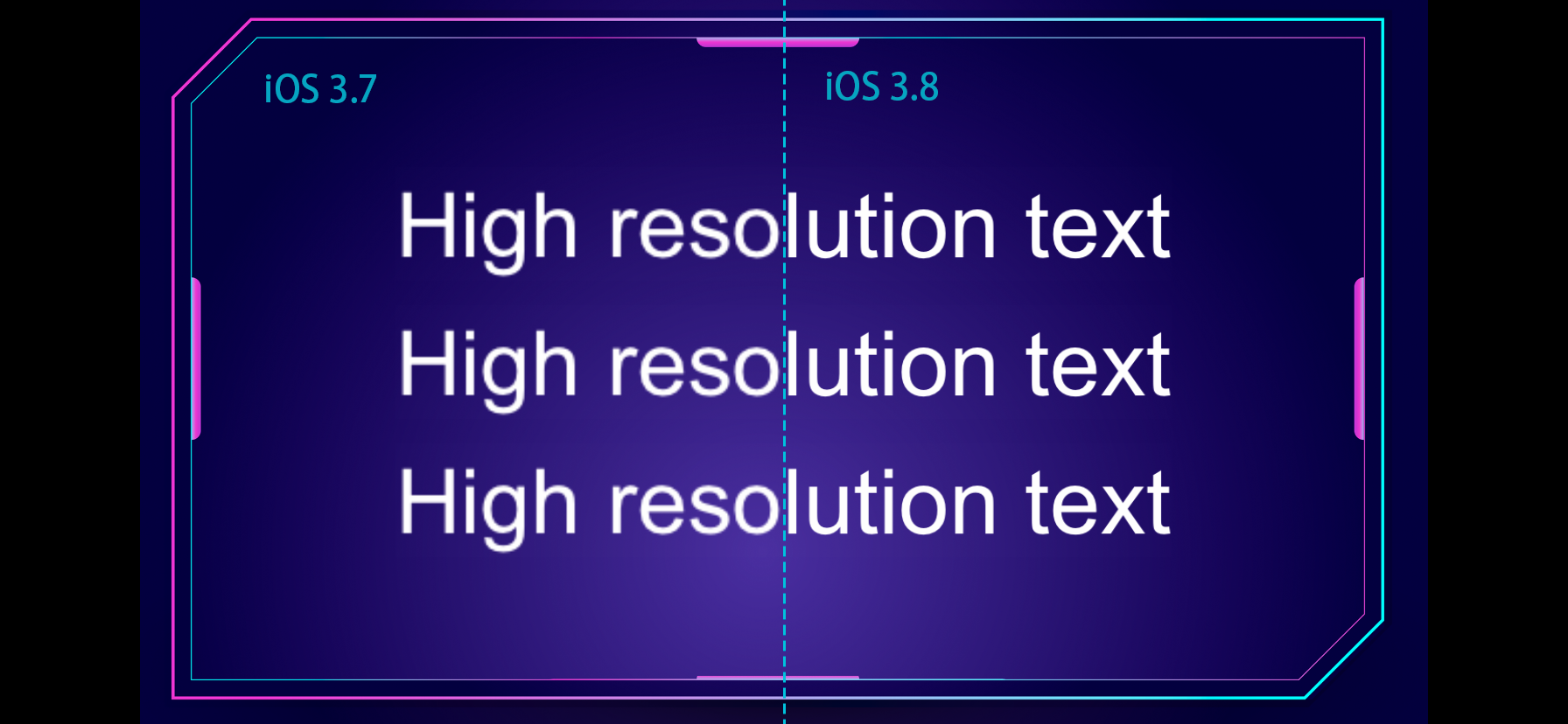
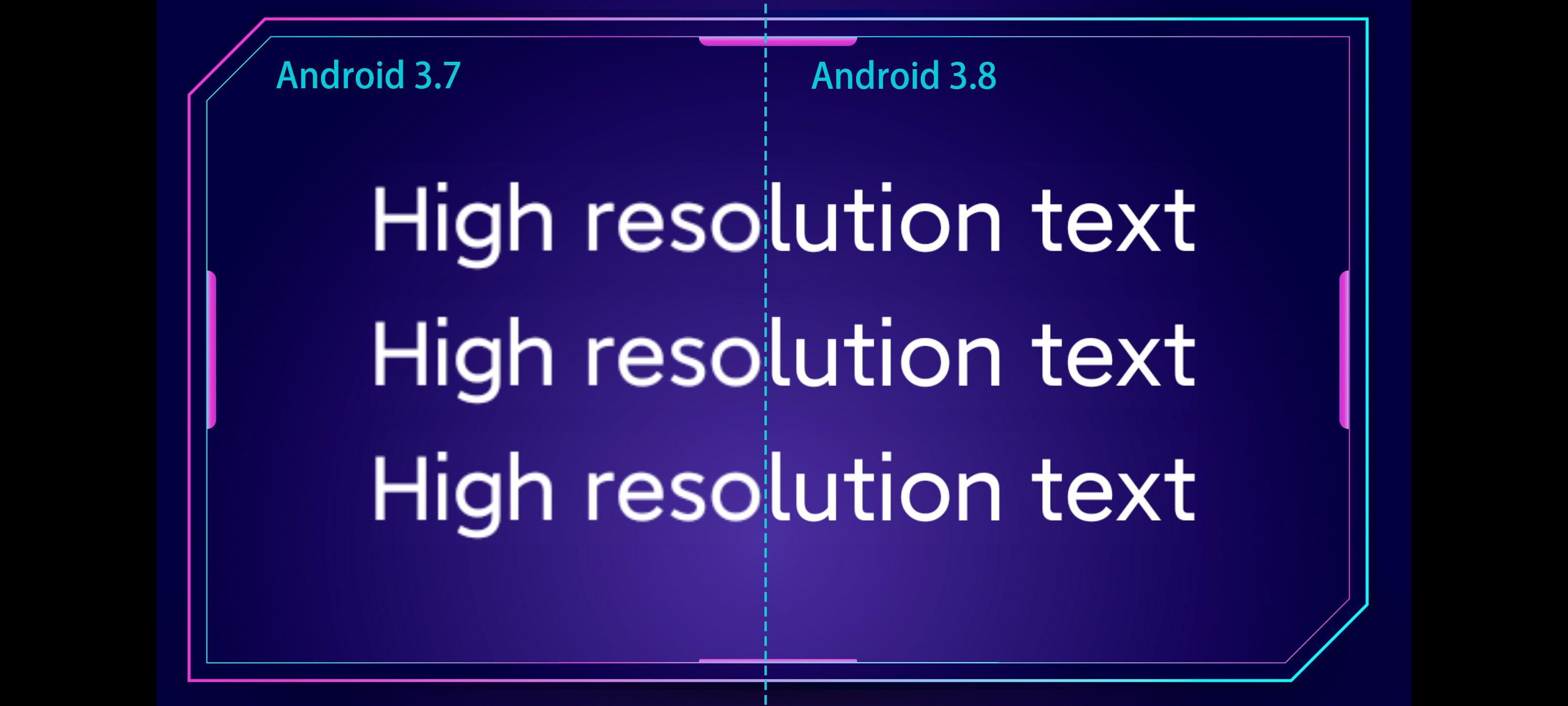
Spine enhancement
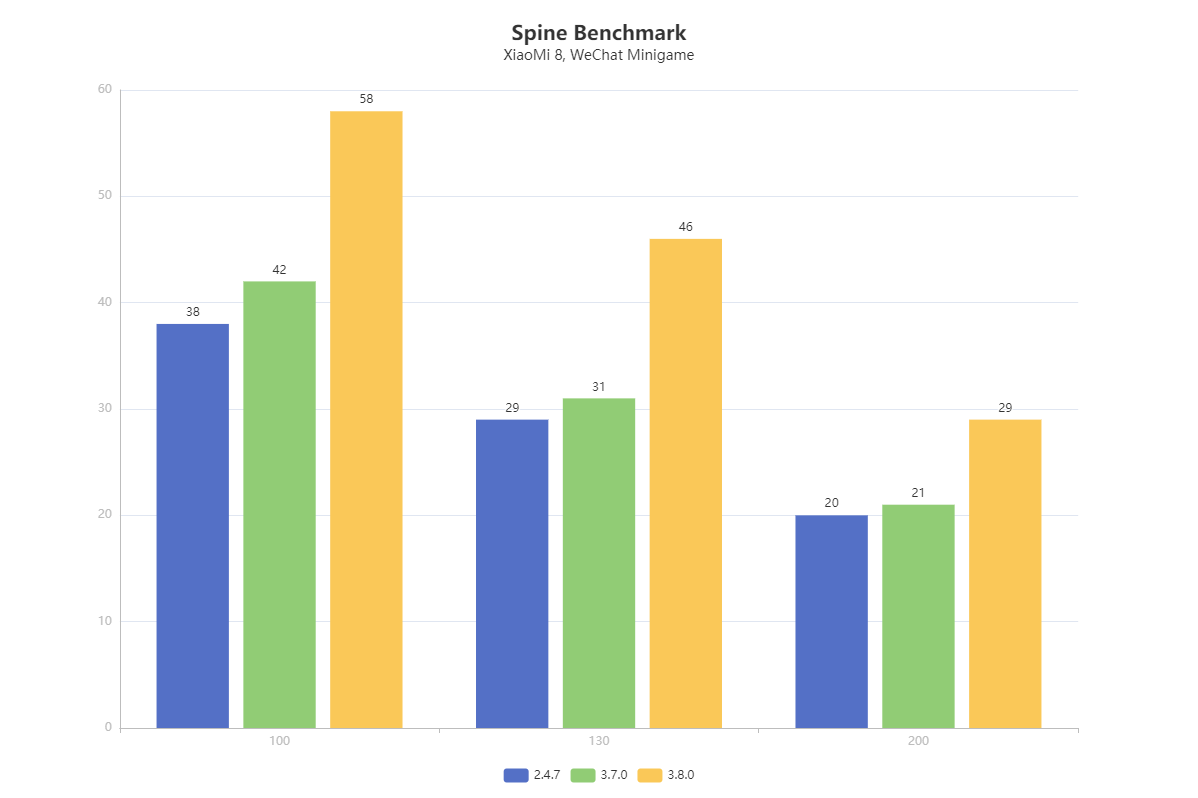
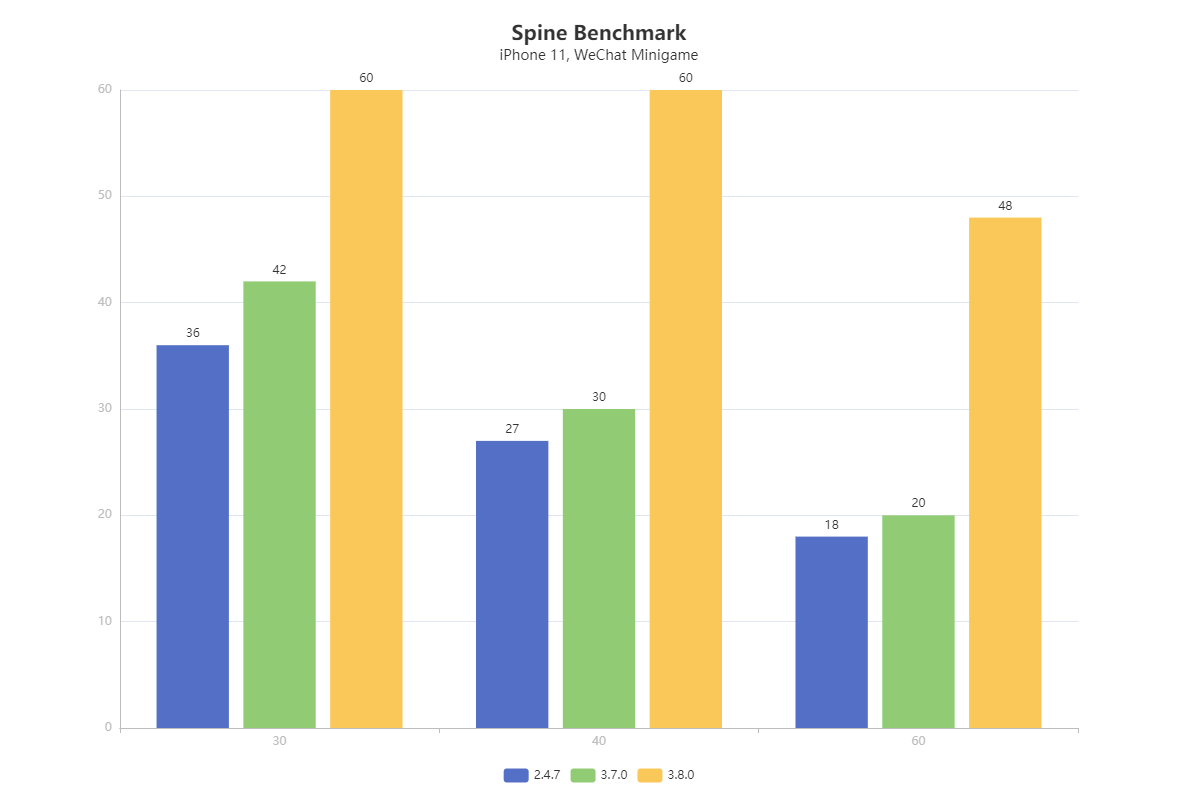
The above picture shows the test results on Xiaomi 8. As you can see, the performance of the WeChat mini game, Spine ver. 3.8 is significantly improved compared to the 3.7 version and 2.4 version, and it can still maintain 30 frames in the case of 200 Spine animations.
Physics System Updates
New CharacterController Component
Configurable Constraints
Added configurable constraint components that can be used to customize various complex physical component connections, such as car axles, various joints, and so on.
In addition to this, the physical system has added features such as sweep collision detection, WebAssembly implementation, and sub-loading.
Animation System Upgrade
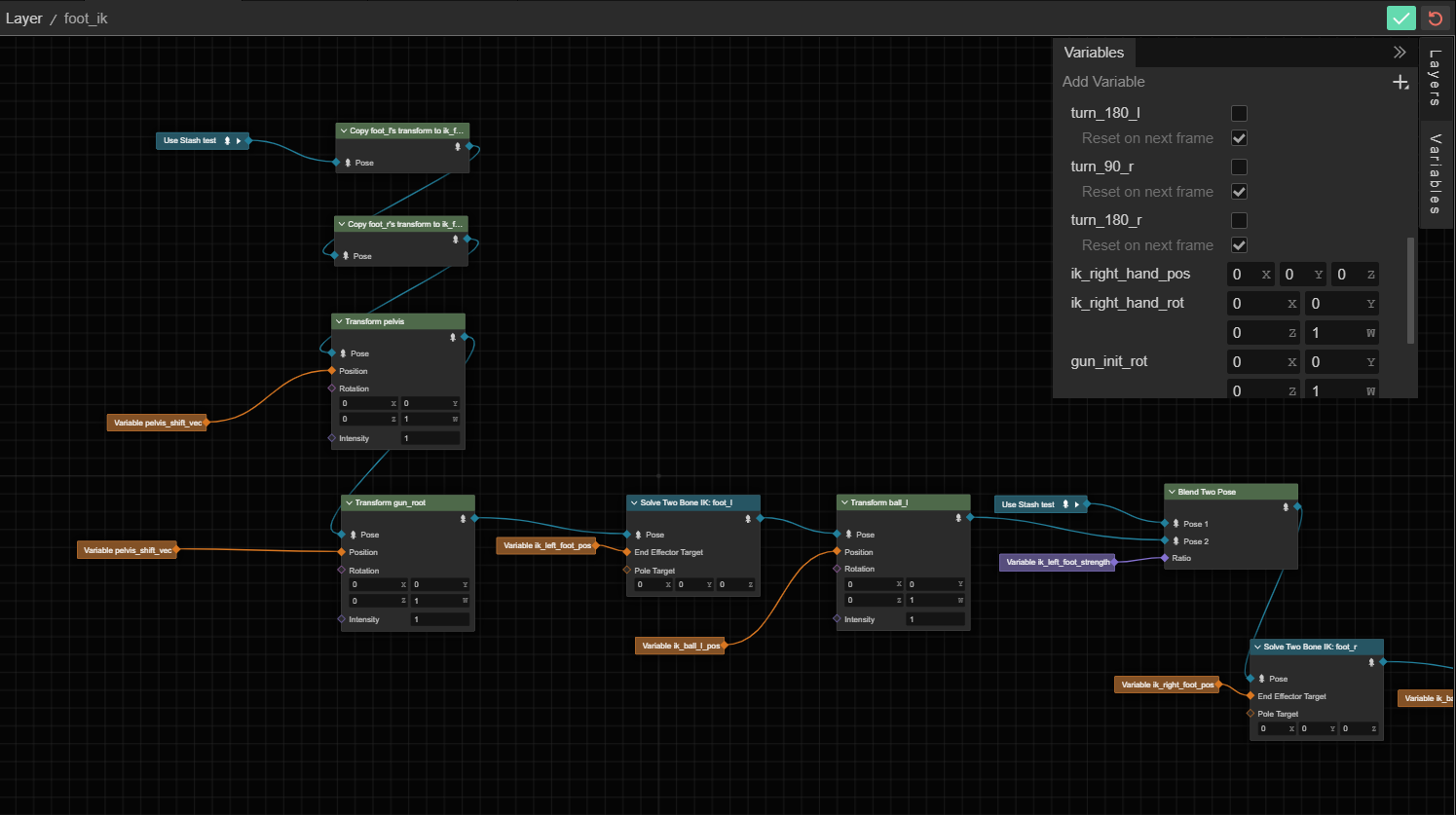
We have introduced a new feature to the Marionette animation system: pose graphs. This new feature will provide support for procedural animation as well as dual bone IK animation. Using the pose graph, developers can conveniently define various procedural animations, and action poses through the node system to build more complex and delicate scene interactions. This will also significantly reduce the number of animations users need to create character animations.
For example, you can define the IK of a character's feet on different planes, let the character climb terrain at different heights, or look in a particular direction while walking. In addition, the pose graph can also be used as a supplement to the animation state machine, which can be nested in the state machine.
Editor
Baking Update
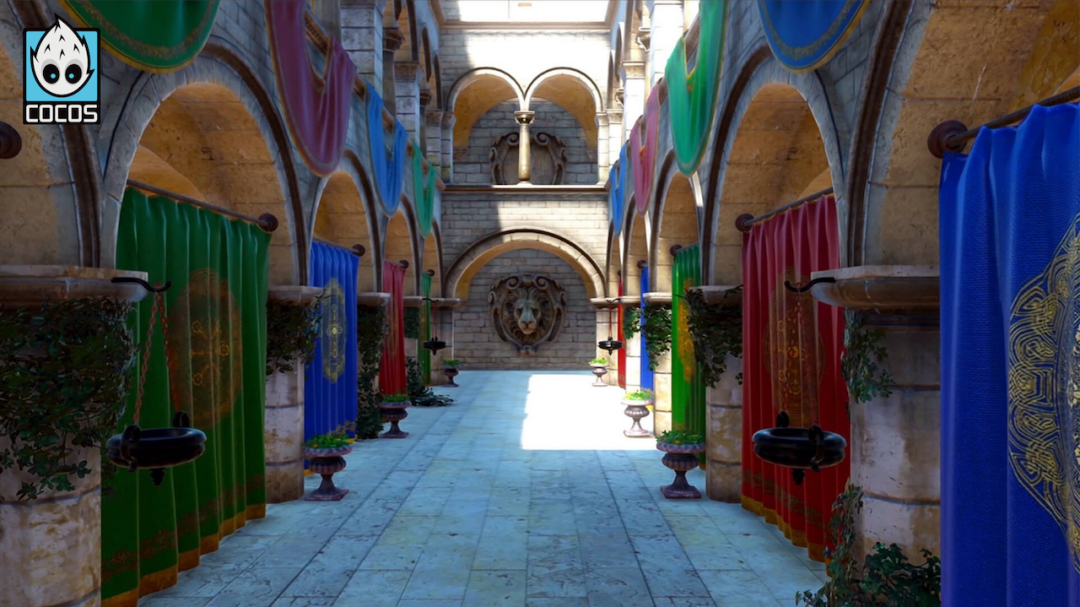
In Cocos Creator 3.8, the Lightmap Baker has been enhanced to support natural shadow transitions, high-definition illumination maps, ambient occlusion (AO), hollowing-out effects, stencil masks, and shadow saturation adjustments, making it easy for developers to create realistic lighting effects.
Asset Bundle Optimization
For larger projects, the dependency on bundles is high. After collecting a lot of user needs and feedback, Cocos Creator 3.8 optimized the management interface of bundles to make bundle configuration more intuitive for each platform.
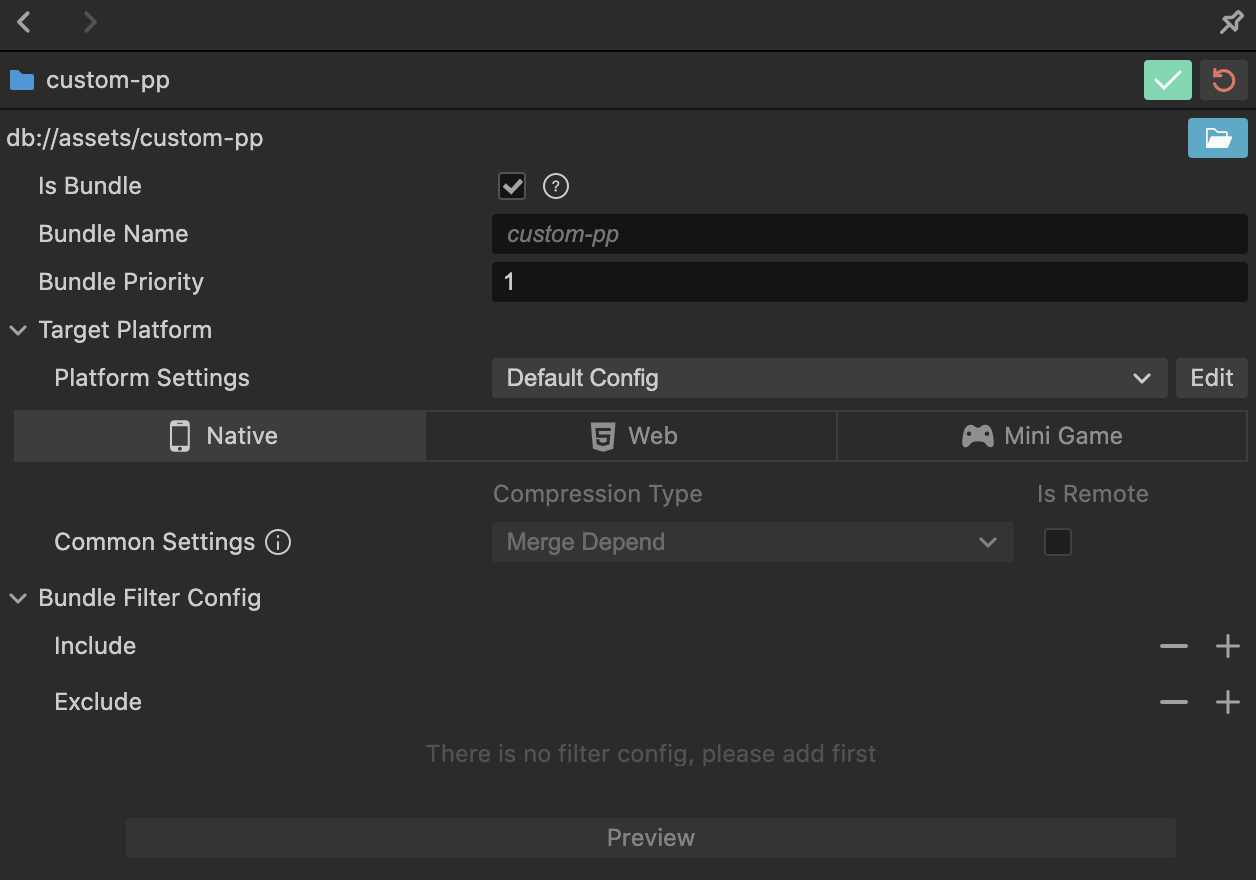
At the same time, many Bundle features have been added to make the construction of Bundles more flexible, streamline the package, and improve the construction efficiency.
-
Supports building specific bundles separately, allowing users to update resources separately. -
Support for adding filtering options makes it easy to weed out resources that don't need to participate in the build. -
Support for preset configuration for precise management of export options for different platforms. -
Build time supports filtering of bundles that participate in the build (all exported by default). -
Only build bundles are supported at build time.
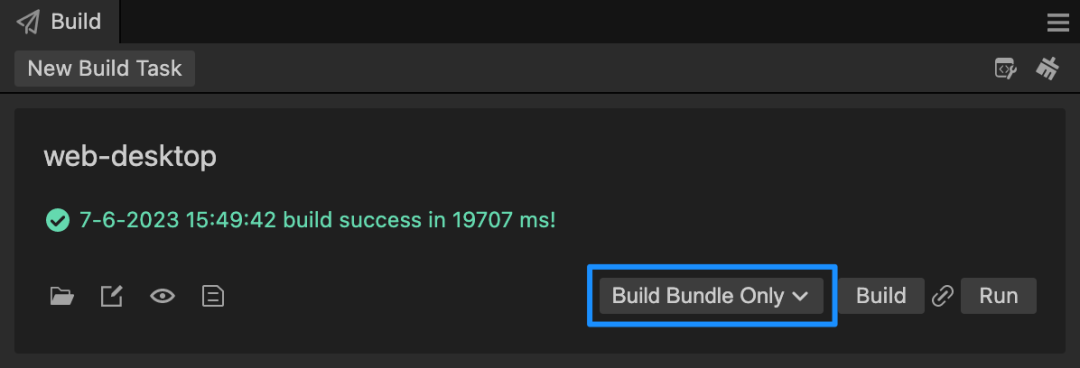
New Platform Support
Google Play Games on PC

The continuous emergence of folding screens and tablet devices indicates that large-screen adaptation is becoming more and more critical for mobile games.
At this year's Google IO conference, Google Play Games on PC and large screen experience received significant attention as Android platform updates. Cocos is also officially listed as a recommended game engine for the large screen experience by Google.
Starting from Cocos Creator 3.8, you only need to check x86 architecture and the InputSDK option while building for Android to meet the platform requirements of Google Play Games on PC.
The platform is an important opportunity for Google Play to try to expand the desktop platform, and it is also an important opportunity for many developers to gain new users.
Google AdMob For Cocos Creator
We’ve also been working behind the scenes to help the many developers on our Discord and forums that have asked for better connection to Google Ads. We had Google AdSense extension for a little while, now with v3.8 release, we also have Google AdMob extension ready for all developers. We will have a separate article to discuss this and how you can get start with it. In addition, we will release the extension as open source project so that developers who want to develop native extensions or integrate third party C++ SDKs can refer to this repository. It includes everything you need to know, from C++ plugin integration with CMake for different platforms, to exposing TypeScript APIs from C++ library, and the usage of Swig binding system etc.
We'll be releasing the extension in the coming weeks as well as tutorials in the coming future.
RenderGraph: Infrastructure for Custom Render Pipeline
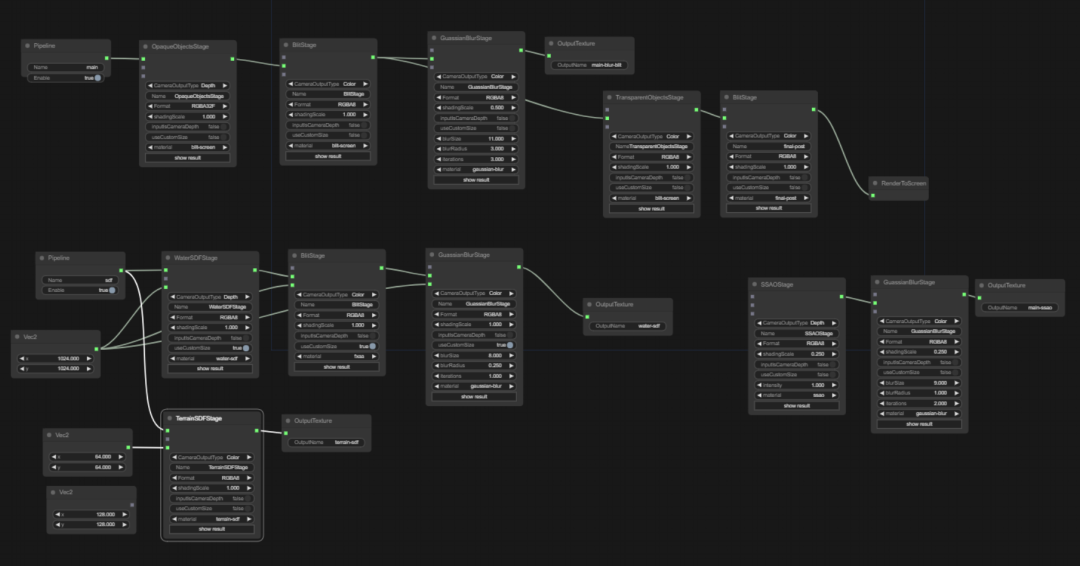
WebAssembly
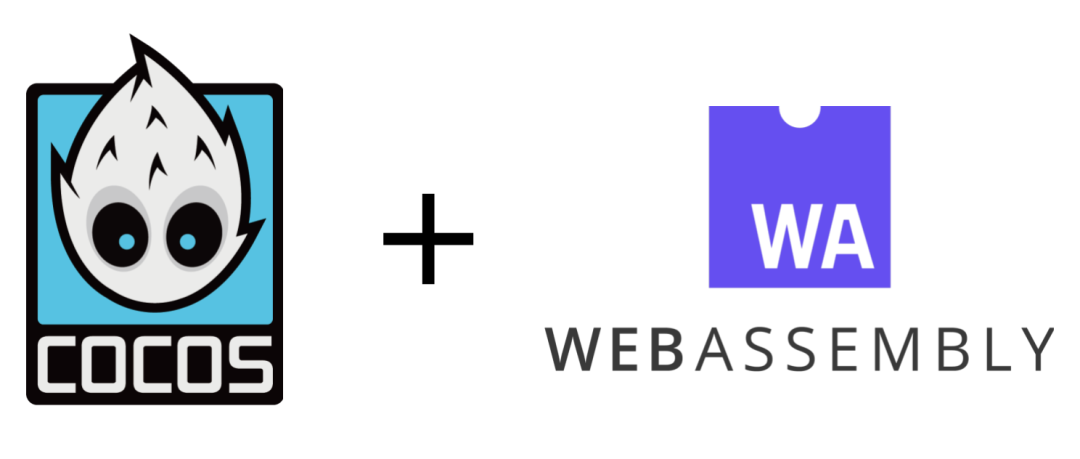
The engine also provides a WebAssembly module sub-packaging mechanism to reduce first-load content and loading times.
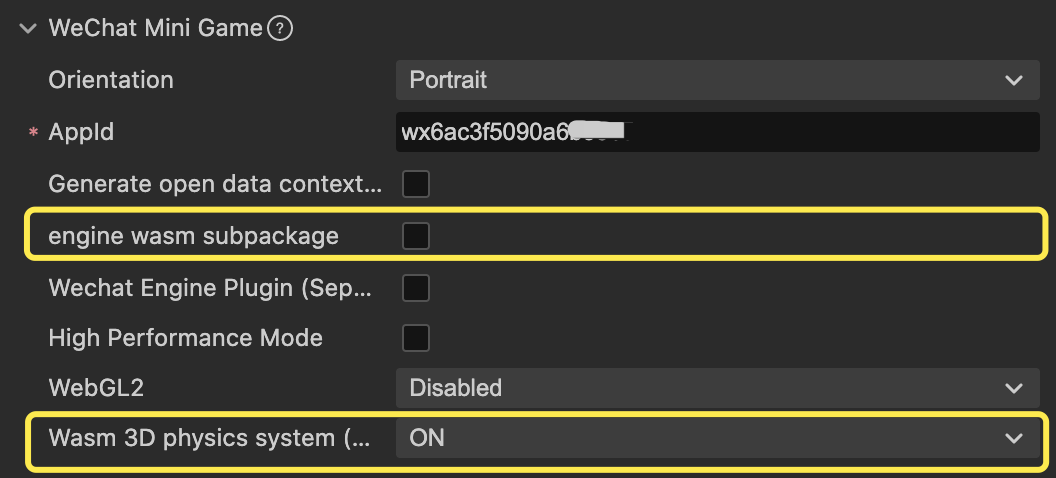
Message from the Engine Team
We are excited to announce the release of 3.8 LTS, a gift to the game development community. We hope that this release will serve as a milestone of the two and a half years since the 3.0 release, and we hope that developers who have not yet upgraded to the latest version of 3.x will join us.
In addition to new features, Cocos Creator 3.8.0 significantly improves user experience and system stability. We invite you to click Read More to read them.
Let's look forward to Cocos's future development. We believe that we will create more possibilities with your support and our efforts.








